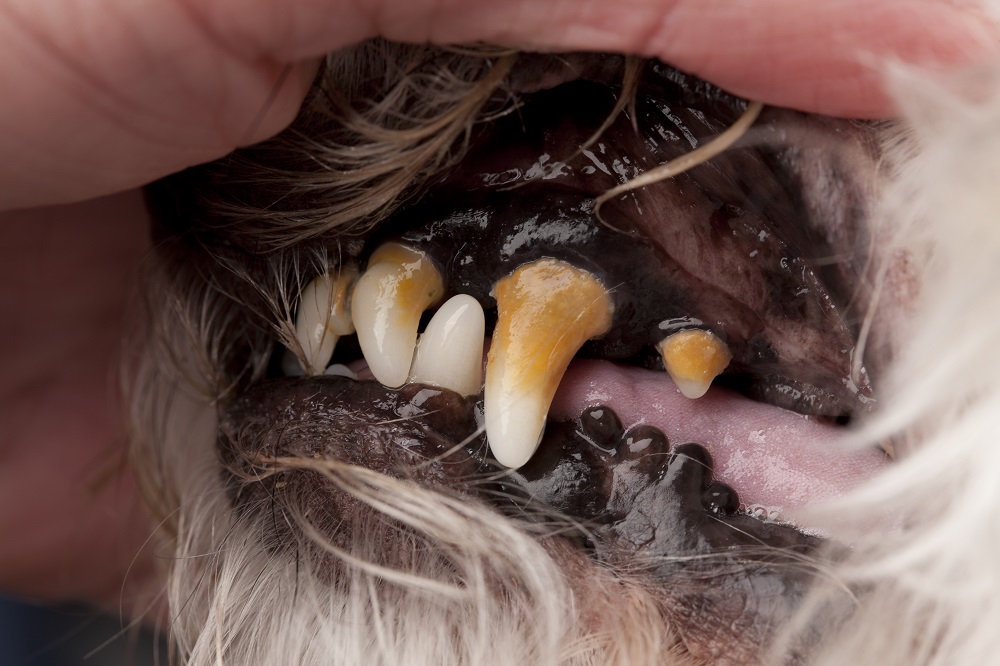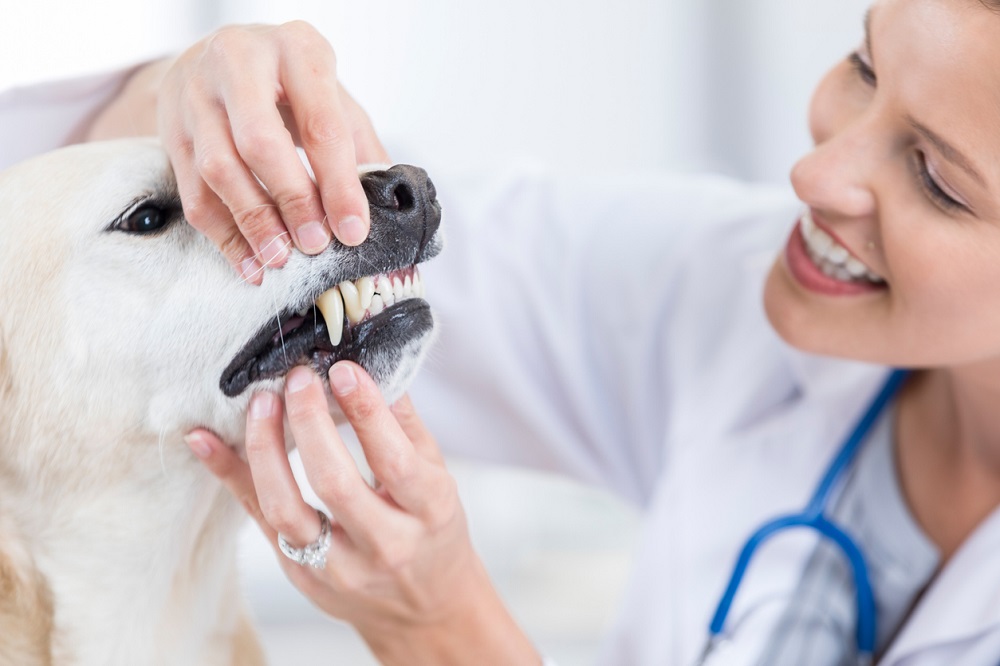5:51 pm

You brush and floss your teeth twice daily, and visit your family dentist every six months, because you know that good oral hygiene is important for your overall health. Moreover, you want to avoid painful tooth root infections and prevent costly fillings, root canal therapies and periodontal procedures. But, when was the last time you thought about your pet’s oral health? Your pet’s teeth can develop the same problems—in fact, dental disease, tooth decay, and painful infections are inevitable if your pet does not have a regular professional oral health regimen, followed by daily home oral care.
Dental disease is the most common health problem in U.S. pets, but often goes unnoticed until your pet develops an abscess with a draining tract and facial swelling, or stops eating because they are in tremendous pain. Many pet owners notice early dental disease signs, such as bad breath, inflamed gums, and plaque accumulation, but consider them normal, and do not seek treatment for their pet. The fact that pets typically do not stop eating, or complain, until they are in excruciating pain only compounds the problem. Go ahead—look inside your pet’s mouth, and take a sniff. If you see inflamed gums or smell a foul odor, your furry friend is past due for an oral health assessment with your family veterinarian. Other dental disease signs include:
Fortunately, early dental disease can be treated, and possibly reversed, with professional dental cleanings and daily in-home care. Pets with advanced dental disease may need a veterinary specialist to restore a pain-free, healthy mouth and preserve their remaining teeth. Animal Emergency Referral Associates’ dentistry and oral surgery department is available to treat the most advanced dental problems and emergencies.

A professional dental cleaning by your family veterinarian is similar to the cleaning you receive every six months from your dentist, and includes:
If your family veterinarian diagnoses more advanced problems, such as fractured teeth, tooth root infections, or bone loss from periodontal disease, they may extract the diseased teeth, or refer your pet to AERA for appropriate treatment options.
Most pets require yearly dental cleanings, although some pets, especially those who have already developed dental disease, may need more frequent cleanings. Your family veterinarian will recommend a professional dental cleaning schedule based on your pet’s oral health.
You would not skip tooth brushing between regular dental cleanings, and neither should your pet. Oral bacteria constantly deposit a sticky plaque on your pet’s teeth that quickly hardens to cement-like tartar, if not regularly removed by brushing. Tooth brushing cannot remove tartar, so it is best to start your pet’s at-home dental care regimen immediately after a professional cleaning.
Most pets accept tooth brushing surprisingly well. Use a flavored, pet-friendly toothpaste and a small finger brush or toothbrush, and focus on brushing the outside surface of each tooth. Start slowly, allowing your pet to lick toothpaste from your finger, and gradually working up to daily toothbrushing sessions. Follow each session with a healthy treat, such as a carrot stick, and lots of praise.
The best way to avoid painful dental problems and advanced dental care for your pet is with regular tooth brushing, and yearly professional dental cleanings to keep plaque and tartar at bay. Unfortunately, if bacteria-laden plaque and tartar accumulate unchecked, they will creep under your pet’s gum line and attack their periodontal ligaments, which attach each tooth firmly to its bony socket. Periodontal disease leads to painful tooth loosening, root decay, infection, and bone loss. If your pet develops this level of dental disease, which is common in pets who do not receive routine dental care, they may need advanced care by a veterinary dentist or oral surgeon.
AERA’s dentistry and oral surgery department will partner with your family veterinarian to restore your pet’s pain-free mouth. Procedures we can perform include:
Although the best oral health program begins when your pet is around 6 months of age, it is never too late to start. Schedule an oral health assessment with your family veterinarian to discuss the right plan for your pet. Contact AERA if their exam reveals advanced dental disease that requires the expertise and experience of a specialist.